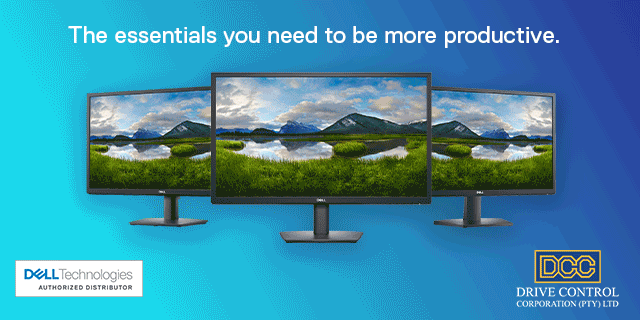Don’t let data be a stumbling block in your SAP S/4HANA upgrade
By Industry Contributor 4 July 2022 | Categories: news.jpg)
NEWS SPONSORED BY DELL E-SERIES 24" MONITORS FROM DCC:
By Gary Allemann, MD at Master Data Management
SAP ECC 6.0 is the mainstay of many Enterprise Resource Planning (ERP) systems, and with support for the solution being discontinued in the near future, organisations need to migrate their systems. Whether they are moving to S/4HANA or another system, the challenges remain the same. Migrating from one application to another is always a complex task, and while a lot of time, money and attention is typically given to replicating functionality, the data is often left for the last minute. This can bring the whole project to a halt, because data cannot simply be copied and pasted from the old to the new. Data needs to be an equal priority, otherwise it will be a significant stumbling block in any migration.
It’s a migration, not an upgrade
Whether organisations are moving from ECC to S/4HANA (which is the most likely scenario if they are already an SAP house) or they are looking to implement a completely different ERP system, there are similar challenges ahead. SAP 4/HANA is essentially a new application, with different data structures and constraints to SAP ECC. Everything a business needs to run must be changed, altered or adapted to run with a new solution, and data cannot simply be moved as is from one system to the other. SAP data models are traditionally complex, technical and difficult to understand, and now they are also vastly different.
In addition, there will typically be a period of time where both systems need to run simultaneously, which means that data processing may need to be supported and synchronised across environments.
Plan the data migration
While business may often contract a specialist to deliver the functional transformation, the data migration is often left out of scope. Assumptions are made that data will be consistent across systems, and can easily be moved when the new ERP is ready.
Often, this means that major system design issues are only uncovered during the data migration, causing substantial delays and rework. Key to success is planning data migration in tandem with the system changeover. Data migration needs to be planned by analysing the data, identifying the risks inherent in the data, performing a source to target map using available tools. There also needs to be an understanding of the differences between the data models and constraints of the current and target ERP systems so that potential issues can be addressed during development.
Tools like Safyr, provide an accurate understanding of how your ERP systems store data, and allow you to quickly identify and map useful datasets across systems.
Data quality concerns
Data quality also requires consideration. Technical data risks that could impact the migration, such as constraints in S/4HANA that are not enforced in ECC, or fields in S/4HANA that are not required in ECC must be identified and managed. As data is migrated, compatibility issues occur because data models are incompatible, and if these issues are not understood at the outset, the migration might fail. The later these constraints are identified in the development process, the more rework and cost they require.
On a deeper level, this is also an opportunity to address past issues with badly-captured or poor-quality data – something that has come to be known as data debt. Migrations give businesses the opportunity to pay off some of this data debt by fixing data inaccuracies and issues and putting controls in place to ensure we do not keep on repeating the same mistakes, including missing, inaccurate and incomplete data. The plan must consider how we will, if necessary, maintain data quality and synchronisation across the source and target systems, until such time as we are ready to finally decommission the old SAP ECC system.
Take your data seriously
Data is an integral component of any ERP system, and if you do not plan effectively for your data migration, it will inevitably take longer than anticipated and cost far more than was budgeted for. It could even bring critical business systems crashing down or cause them to grind to a halt. It may mean running two very expensive and incompatible systems in tandem, with the new solution unable to be used because data quality issues from the past have not been addressed. Use available technology to lighten the load, and lean on a specialist partner to ensure your migration will be a success.
Most Read Articles

Have Your Say
What new tech or developments are you most anticipating this year?




